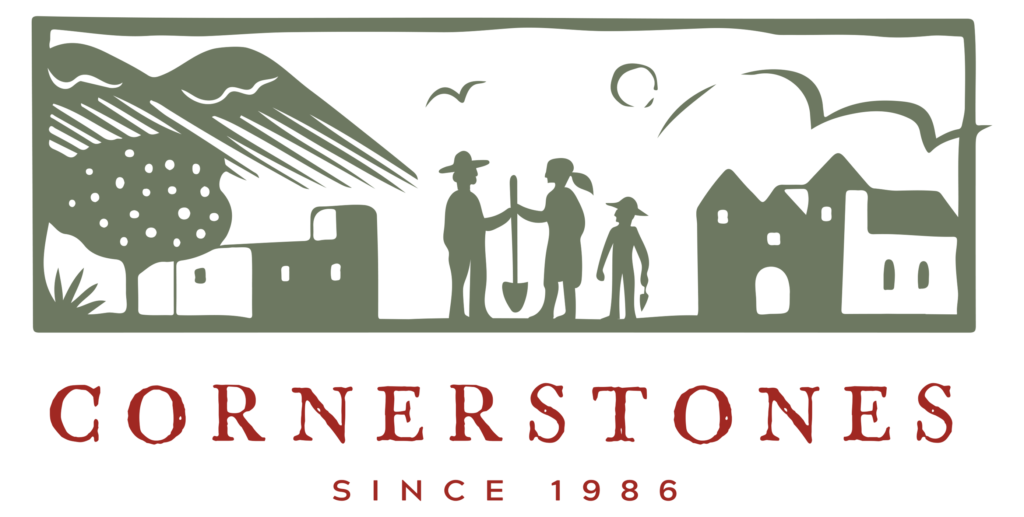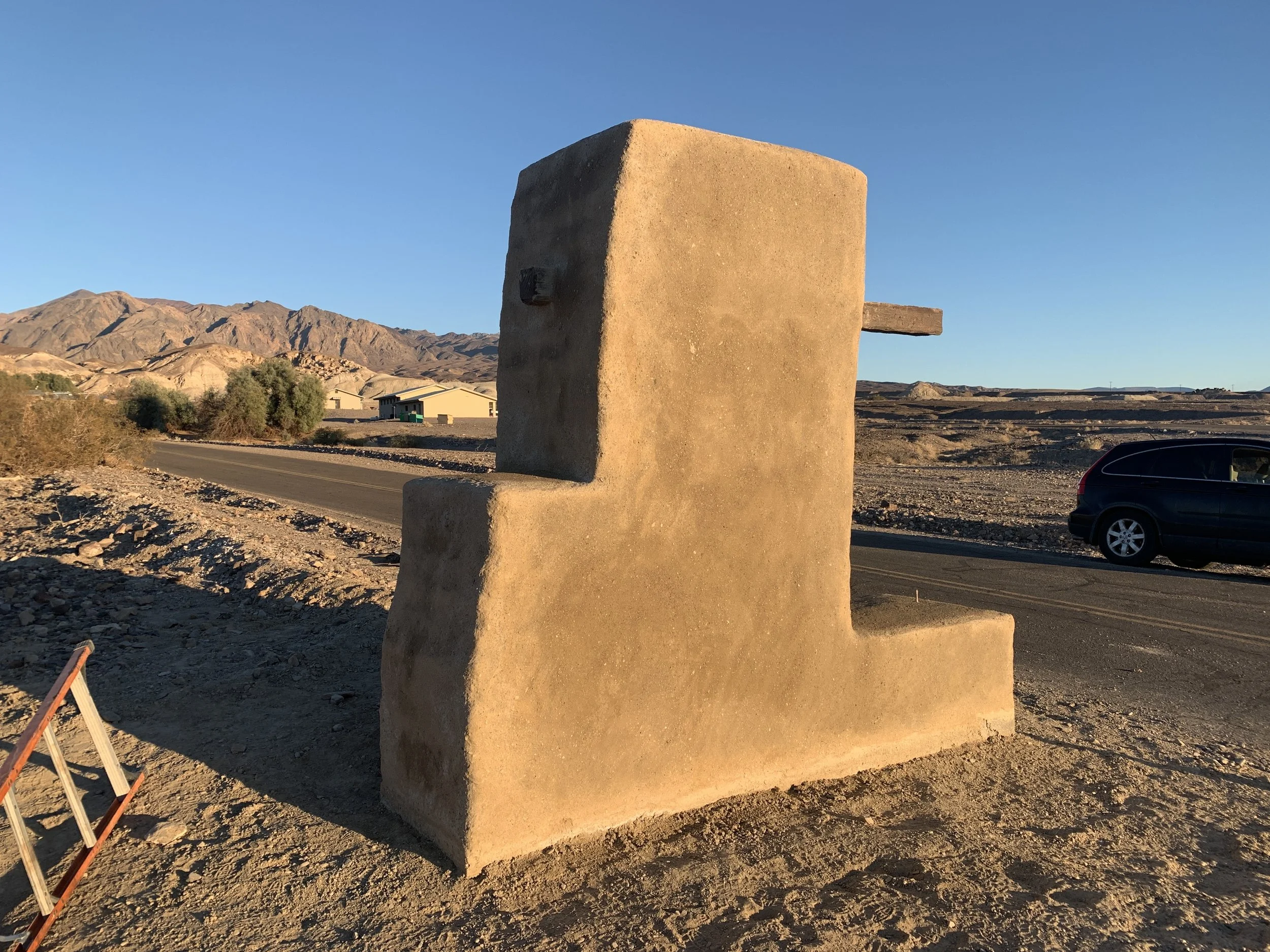An Adventure to Death Valley
In the last months of 2021, Cornerstones staff hit the road to three National Park sites in Southern Arizona and California to complete adobe and stone masonry projects. We spent time training Interns in the Traditional Trades Apprenticeship Program at Casa Grande Ruins National Monument, working with staff and volunteers at Organ Pipe Cactus National Monument, and running an adobe workshop at Death Valley National Park. Here we want to highlight the work we accomplished in Death Valley.
Cornerstones held a three-week workshop at Death Valley National Park, which focused on making over 2000 adobes! To reach our goal, we partnered with the Arizona Conservation Corps’ Tohono O’odham crew. We exceeded our goal, making 2091 adobes. Weighing in at 35 pounds each, that meant 70,000 pounds of earth were mixed, formed into bricks, flipped, and stacked. The Park will use these adobes in an upcoming restoration project in the park.
As adobe production was in full swing, we also restored a nearby 1930s entrance sign to the Cow Creek Administrative area. The sign had been in disrepair since the late 1980s. Volunteers and park staff were trained on how to lay adobes, stitch adobes into an existing wall, and carry out earthen plastering.
The first two pictures below show us restoring the 1930s Cow Creek Entrance Sign, and the second two are of AZCC and NPS staff making adobes and standing in our adobe field.
Photos by Issac Logsdon
A New Podcast by Cornerstones and Adobe In Action
Adobe In Action, a New Mexican nonprofit that supports owner-builders with their adobe homes, collaborated with Cornerstones on a podcast series, Mud Talks: Preserving Earthen Architecture. The podcast miniseries, hosted by AIA’s Executive Director Kurt Gardella, explores practical step-by-step breakdowns of essential aspects of earthen preservation. These explorations range from engineering principles through standards for historic preservation, introductory adobe-brickmaking through maintenance plans for adobe buildings.
The podcast series was made possible through a generous grant from the National Center for Preservation Technology and Training and the National Park Service. Cornerstones' Program Director Jake Barrow served as the Principal Investigator for the Grant Agreement.
The first episode dives into the Department of Interior's standards for historic properties. Each standard exemplifies how historic preservationists balance history, aesthetics, and the use of buildings. Rehabilitation, for example, allows for additions, repairs, and modifications but protects portions and features that convey historic, cultural, and architectural values. Preservation, on the other hand, sustains existing forms and the overall integrity of structures as they were once built. Notions of historicity lace both concepts, and each deeply informs how Cornerstones goes about maintaining and rebuilding Southwestern historic and cultural centers.
In the first episode, Jake Barrow, our Program Director, discusses the restoration projects at the historic core of the Ohkay Owingeh Pueblo. Members of the pueblo inhabited many of the old adobe homes there, but most were deteriorating, and some had been lost to time. Using HUD funds in a new and innovative way, many homes have been rehabilitated back to livability using traditional adobe technology, keeping families in the core pueblo. Bringing historic preservation practices to housing development in this case allowed for greater environmental sustainability by not relying on new construction. It also built social sustainability by preventing displacement. This project enters its fifth phase in 2022.
We’re very grateful for Kurt’s excellent work on this project, and we hope that the Mud Talks: Preserving Earthen Architecture informs and tantalizes a wide audience, from experts to curious members of the public. We will be sharing more of what the episodes cover in future Mud Blasts. You can listen to the podcast's inaugural on Apple Podcasts, Spotify, or Spreaker. Subscribe to the Mud Talks channel to catch future episodes.




